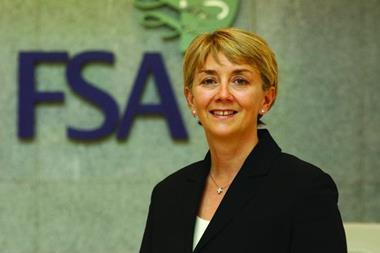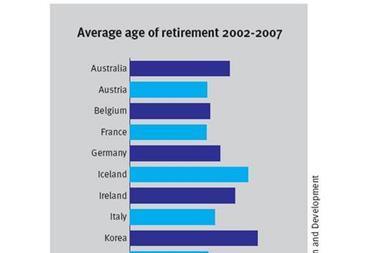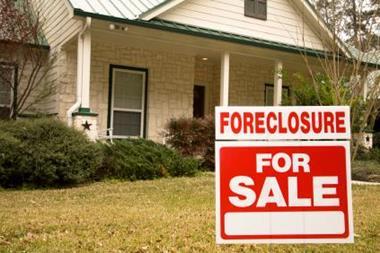Risk is following hard on the heels of the recession, warns Nathan Skinner
Warren Buffett once famously observed that you only find out who is swimming naked when the tide goes out. Now that the financial tide has gone out, and reached low-tide one hopes, it has revealed a stark and shocking scene.
First to emerge from the water red faced were the investment banks. They learnt the hard way that an asset is only worth as much as the market will pay for it. It turned out that no matter how many triple-A stamps they gave their iffy sub-prime debts, no one wanted to touch them once the housing market bombed.
This triggered the beginning of a series of unfortunate events, culminating in massive corporate disasters, and now litigation is an inevitable consequence. For common shareholders who have been left with practically nothing it could be the only recourse.
Ever since it was revealed that several financial houses were skinny dipping, the liability culture has been hard at work. No one wants to accept responsibility for their mistakes, and legal systems that reward litigators perpetuate the blame game.
Concerned about growing exposure to lawsuits and significantly more frequent and severe claims, financial firms are stuck in no man’s land. But as the crisis spreads to the wider economy they are not the only ones in the firing line. Many companies will find themselves the subject of more claims, some of a dubious nature, as people look for new ways of making money or settling grievances.
The catalyst for the biggest liability scandal at present is another financial collapse, this time due to alleged criminal wrongdoing rather than management incompetence. Once-respected financial adviser and former chairman of the NASDAQ stock exchange Bernard Madoff may have conned investors out of $50bn in a shocking Ponzi scheme, according to US prosecutors. Court documents claim that Madoff told his employees that his operations were ‘all just one big lie’.
Individuals around the world, some of whom had all of their savings invested with Madoff, are furious. Many large private banks in Europe as well as pension funds and individual investors are running to the courthouse looking for redress. The first obvious target to retrieve lost money is Madoff’s own personal and business assets. Big investment firms have launched pre-emptive legal action against his firm in the belief they will get sued by their own investors. And as evidence appears that Madoff’s assets will not cover what his investors believe they are owed, they are turning to other sources.
Pension funds are leading the charge as investors turn their anger on the big banks that were the financial middlemen and played a hand in their investments. In January, Merrill Lynch agreed to pay $550m to settle two separate class action lawsuits stemming from sub-prime loss disclosures. The Ohio State Teachers Retirement System agreed to a $475m settlement. Merrill also paid $75m in cash to employees who invested in the company’s stock under some retirement plans.
Several big European banks came close to collapse as a result of the investments they made and now some of them are facing Madoff-related lawsuits of their own. HSBC, UBS and JP Morgan Chase have all been named in suits, creating another unwanted headache, coming as it does on the back of the credit crisis.
As they themselves become the target of legal action the banks have turned plaintiff and launched suits against their financial advisers and global auditing firms. They say these specialists should have looked more closely at Madoff’s books.
Those targeted with suits will inevitably turn to their insurers, and litigators are shaping and framing their claims so they stand the best chance of tapping this potential pool of money. The big directors and officers (D&O) insurers, like AIG, CNA and Chubb, are likely to be hit hardest, but other types of insurance will be tapped up – such as errors and omissions (E&O), fidelity, credit and general liability.
This comes at a very difficult time for the insurance market, which is struggling with rapidly deteriorating investment income and rising catastrophe losses. The D&O market in particular is deeply stressed; prices have been falling for a long time and if the market is to be sustainable they will have to increase. A surge in liability claims could unsettle the market further. Certain lines of business are likely to be curtailed as insurers focus on remaining as profitable as possible, with D&O, E&O and credit insurance likely to be the principal casualties.
Insurers with a well diversified portfolio should be able to weather the storm best. Raj Singh, chief risk officer, Swiss Re, thinks the insurance industry is well prepared. ‘The financial services industry has been risk managing its exposure to these liabilities for a long time,’ he says, adding: ‘There will be an increase in litigation and claims but the insurance industry’s exposures have been reduced.’ In the future he thinks insurers will do much more due diligence on the companies which approach them to buy D&O coverage. ‘Companies will find available coverage much tougher to obtain,’ he says.
The bezzle
“Companies will find available D&O coverage much tougher to obtain.
Raj Singh, chief risk officer, Swiss Re
Some types of fraud tend to increase during a recession, such as cash-strapped people making spurious claims against their employer or inflating the costs on their insurance claim. Other types may not increase, but become much harder to hide.
In 1954, the American economist John Kenneth Galbraith framed the concept of a ‘bezzle’, which he described as an amount of undiscovered fraud that exists in a country’s businesses at any given time.
He also said the bezzle is harder to hide during a tougher economic climate, as appears to be the case with Madoff.
In ‘The Great Crash 1929’ he wrote: ‘In good times people are relaxed, trusting, and money is plentiful. But even though money is plentiful, there are always many people who need more. Under these circumstances the rate of embezzlement grows, the rate of discovery falls off, and the bezzle increases rapidly. In depression all this is reversed. Money is watched with a narrow, suspicious eye. The man who handles it is assumed to be dishonest until he proves himself otherwise. Audits are penetrating and meticulous. Commercial morality is enormously improved. The bezzle shrinks.’
The Madoff case also bears witness to Galbraith’s claim that businesses rediscover a sense of morality when times are tough. Before he was arrested, Madoff owned up to senior heads of his firm. He confessed the business was ‘finished’ and had been insolvent for years. It was all ‘just one big lie,’ he said.
Another corporate catastrophe at the beginning of this year bears startling similarities. Stock in the Indian outsourcing company Satyam plunged when founder Ramalinga Raju confessed to a $1bn accounting fraud. Satyam was crowned ‘India’s Enron’. Like the infamous energy trading company, it succeeded in fooling investors that it was flourishing despite having a massive hole in its balance sheet. Indian regulators have begun an inquiry into why auditors failed to raise the red flag, and shareholders have launched class action lawsuits in the US.
Andre Basile, vice president of commercial D&O at AIG UK, warns that businesses are more likely to discover fraud in an economic downturn. Corporate entities themselves could face suits on the grounds they misrepresented their financial position, he says, adding that company directors could also be sued for breaching their duty of care.
Other trends
History has shown that during economic downturns certain other types of liability increase. As companies are forced to make redundancies in line with falling demand for their products there is an increased risk that some of these laid off workers will seek compensation. Employers are more likely to be slapped with discrimination, stress or unfair dismissal allegations.
‘It is now more important than ever that companies go through the correct procedures when they make redundancies,’ warns Julia Graham, AIRMIC chairman and chief risk officer of law firm DLA Piper.
Some companies also anticipate a rise in fraud. In tough times, unlawful practices that would previously have been seen as unacceptable, begin to look more attractive. Big companies, with large claims data repositories, are probably well aware of the dangers of bogus personal injury claims. ‘During a recession certain businesses tend to report an increase in small liability claims, or slips-trips-and-falls,’ notes Graham.
The number of commercial disputes could also rise. When suppliers or customers go insolvent, liquidators will use any means they can to extract money from their debtors. Unlike the original company, debt collectors are not concerned with maintaining working relationships, only with reimbursing their clients.
In this environment there is a danger that companies take their eye off the ball and stop investing so much in protecting against other risks. Pierre Sonigo, general secretary of FERMA, warns: ‘Environmental liabilities will become secondary in priority for some companies.' And other dangers are no less acute. A terrorist strike now could have a serious destabilising effect on many Western economies. In the current financial climate, risk managers will have a hard time convincing company heads to invest in mitigating what appear to be less pressing risks.
Expert opinion
By Paula Jefferson, head of Beachcroft’s disease group
Do not forget emerging risks. It may be tempting to ignore emerging risks to concentrate on the more immediate ones. In the long term, this is unwise. Take nanotechnology: could it pose as big a risk as asbestos? It has developed rapidly, and today there are widespread applications, from computer chips to food production. Inhaling tiny nano-particles could cause similar respiratory problems to asbestos. But no one really yet knows what the consequences will be. Businesses are faced with a significant challenge. They want to embrace the opportunities, but with limited information it is very hard to assess the risks posed by the technology.
This lack of knowledge restricts the measures that employers can take to protect their workforce. Workers may still be at risk, even if they follow up-to-date health and safety guidelines. The best advice is to keep up to date with the latest thinking. Employers have a duty of care to provide a safe place of work for their employees and should conduct regular risk assessments. If you are undertaking these steps you should be able to avoid future criticism.
Postscript
Nathan Skinner is associate editor, StrategicRISK

















No comments yet